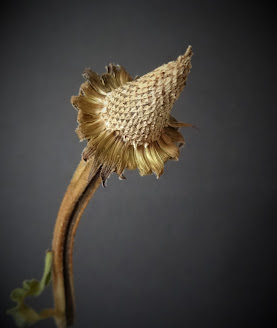 The tall, stately plants topped by brilliant purple flowers -- blooming now by the pond -- are Common Ironweed Vernonia fasciculata. Each 5- or 6-foot tall plant has a purple-green stem, dark green toothed leaves along the stem, and clusters of flowers at the top. Clusters are made up of many flower heads, each about 3/4” across. After the flowers open and mature, each becomes a fruit that is composed of a dry seed with a tuft of coppery brown hair.
The tall, stately plants topped by brilliant purple flowers -- blooming now by the pond -- are Common Ironweed Vernonia fasciculata. Each 5- or 6-foot tall plant has a purple-green stem, dark green toothed leaves along the stem, and clusters of flowers at the top. Clusters are made up of many flower heads, each about 3/4” across. After the flowers open and mature, each becomes a fruit that is composed of a dry seed with a tuft of coppery brown hair.
This is a host plant for the 'American Painted Lady' butterfly and also has value to native bees.
Ironweed got its common name because of several qualities: tough straight stems like iron rods, fading purple flowers become rusty-tinged, and seeds are colored like rust.
Ironweed is one of about 500 species of perennial plants constituting the genus Vernonia of the family Asteraceae; it's species are distributed throughout the world.


























